 GandALF 2010
GandALF 2010
Italy - 17-18 June 2010
First International Symposium on
Games, Automata, Logics and Formal Verification
Minori and the Amalfi coast
Minori
Minori is a pleasant small town on the sea in the Amalfi Coast. The whole town is reachable in a walking distance. Its name derives from the ancient latin name "Rheginna Minor" that came from the river Rheginna, which still runs through the valley of Minori. Minori was founded by ancient roman aristocrats who chose the place for its beauty and mild climate. Today, it is still possible to admire the ruins of an ancient roman villa.
Other places to visit: the Basilica of Santa Trofimena, and the churchs of Santa Lucia, San Gennaro and San Michele as well, good examples of southern Italian architecture. Lemons are a typical product of this area. The industrial production in Minori is related to liquors and other specialities made of lemons and is carried on with strict respect of the genuine local tradition.
Amalfi Coast
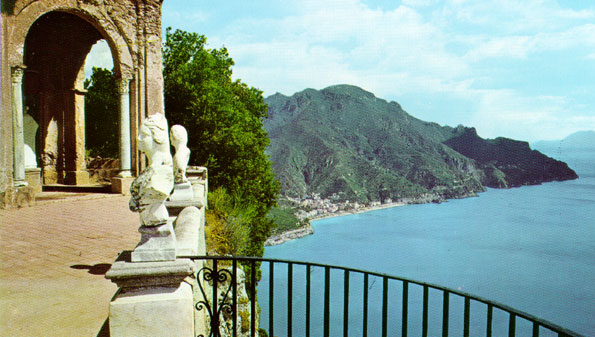 The Amalfi Coast, or Costiera Amalfitana in Italian, is a stretch of coastline on the southern side
of the Sorrentine Peninsula of Italy (Province of Salerno, Campania), extending from Positano in the west to Vietri sul Mare
in the east.
The Amalfi Coast, or Costiera Amalfitana in Italian, is a stretch of coastline on the southern side
of the Sorrentine Peninsula of Italy (Province of Salerno, Campania), extending from Positano in the west to Vietri sul Mare
in the east.
The landscape along the coast comprises of the mountains and sea with several coves and creeks which can only be reached by sea. There are several natural areas which have remained completely untouched by tourism or by any human influence. Every town along the coast has a treasure of culture, art and architecture.
The Amalfi Coast is blessed with excellent natural beauty and a rare combination of history, culture and art for which it has been included in the UNESCO's world heritage list since 1997.
The main town close to the Amalfi Coast is Salerno, the municipalities belonging to the coast are Vietri sul Mare, Cetara, Maiori, Tramonti, Minori, Ravello, Scala, Atrani, Amalfi, Conca dei Marini, Furore, Praiano and Positano. Very close to the territory of the coast (near Furore and Conca dei Marini) it's situated Agerola, located in the Sorrentine Peninsula and belonging to the Province of Naples.
Places to visit near Minori
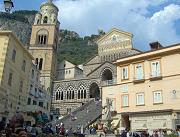 The Cathedral of Amalfi, dedicated to St. Andrew, was built in the 12th and 13th centuries.
The Cathedral of Amalfi, dedicated to St. Andrew, was built in the 12th and 13th centuries.
The fašade is in Arab-Norman style and the main door, in bronze, was made in Constantinople before 1066.
The interior, in Baroque style, is full of works of art and represents the best example of how much importance people of
Amalfi gave to the Christian religion.
The crypt of the Cathedral keeps the earthly remains of St.
Andrew, which arrived in Amalfi in 1208.
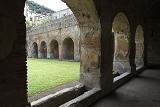 Villa Marittima Romana is a Roman villas and it dates from the 1st century A.D. and was discovered in 1932
but was not excavated until the 1950s.
The villa was built on two floors around a vast courtyard, graced by a pool and surrounded by a portico.
Villa Marittima Romana is a Roman villas and it dates from the 1st century A.D. and was discovered in 1932
but was not excavated until the 1950s.
The villa was built on two floors around a vast courtyard, graced by a pool and surrounded by a portico.
You can admire the hydraulic engineering that brought water to the pool, and the well-conserved rooms decorated with stucco
work and remains of frescoes. One side of the portico opens onto the beautiful ninfeo, a hall richly decorated with
frescoes and stucco work. Also architecturally interesting are the private thermal baths, which have been perfectly preserved.
The staircase to the second floor is partially preserved, but you can climb its 29 steps to the Antiquarium.
It contains a collection of artifacts and frescoes from this and nearby excavations.
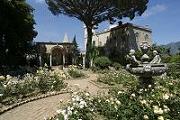 Villa Cimbrone in Ravello on the Amalfi coast of Italy is an historic building dating from at least the eleventh century AD,
although little of the original structure is now visible.
Villa Cimbrone stands on a rocky outcrop known as "Cimbronium", and it is from this landscape feature that the villa takes its name.
It was visited by the historian Ferdinand Gregorovius, who described it thus in his Siciliana: Wanderings in Naples and Sicily (1861):
"incomparable ... where the most beautiful flowers you can imagine flourished, coming from numerous plants of the South ...
redesigned and enriched with countless ... ornamental features, small temples, pavilions, bronze and stone statues."
and referring to the belvedere (also known as the Terrazzo dell'lnfinito, the Terrace of Infinity)
"While contemplating from those Armida's orchards, among the roses and the hydrangeas,
that magic sea in which the blue colour of a very limpid sky is reflected, the wish of being able to fly comes out ...
Right at the edge of the crag there was a terrace commanding an enchanting view; it was surrounded by horrible marble statues which,
however, from afar, had a sort of appeal."
Villa Cimbrone in Ravello on the Amalfi coast of Italy is an historic building dating from at least the eleventh century AD,
although little of the original structure is now visible.
Villa Cimbrone stands on a rocky outcrop known as "Cimbronium", and it is from this landscape feature that the villa takes its name.
It was visited by the historian Ferdinand Gregorovius, who described it thus in his Siciliana: Wanderings in Naples and Sicily (1861):
"incomparable ... where the most beautiful flowers you can imagine flourished, coming from numerous plants of the South ...
redesigned and enriched with countless ... ornamental features, small temples, pavilions, bronze and stone statues."
and referring to the belvedere (also known as the Terrazzo dell'lnfinito, the Terrace of Infinity)
"While contemplating from those Armida's orchards, among the roses and the hydrangeas,
that magic sea in which the blue colour of a very limpid sky is reflected, the wish of being able to fly comes out ...
Right at the edge of the crag there was a terrace commanding an enchanting view; it was surrounded by horrible marble statues which,
however, from afar, had a sort of appeal."
The Cathedral of St. Pantaleon in Ravello, dating back to the medieval times, keeps some of the most interesting artistic
tresures on the Amalfi Coast: first of all, the bronze doors (12th century) by Barisano da Trani,
and then inside the church the magnificent pulpits. Besides, on the left side of the main altar there is the Chapel of St. Pantaleon,
the patron saint of the town; there an ampulla contains the blood of the saint, beheaded at Nicomedia on July 27, 290,
which liquefies every year on that day.
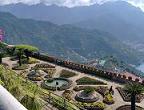 Villa Rufolo: on the same piazza del Vescovado which the Cathedral overlooks, rises the plain entrance tower,
of the magnificent Villa Rufolo, whose ancient function was that of watch-tower.
The Villa, whose original construction dates from 1200AD, belonged, of course, to the powerful Rufolo family, to the Confalone,
the Muscettola, to the D'Afflitto and, finally, to the Scot Francis Neville Reid.
Villa Rufolo: on the same piazza del Vescovado which the Cathedral overlooks, rises the plain entrance tower,
of the magnificent Villa Rufolo, whose ancient function was that of watch-tower.
The Villa, whose original construction dates from 1200AD, belonged, of course, to the powerful Rufolo family, to the Confalone,
the Muscettola, to the D'Afflitto and, finally, to the Scot Francis Neville Reid.